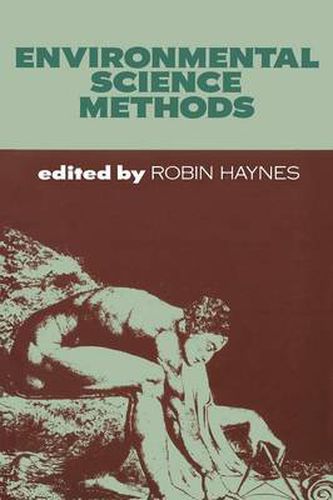Readings Newsletter
Become a Readings Member to make your shopping experience even easier.
Sign in or sign up for free!
You’re not far away from qualifying for FREE standard shipping within Australia
You’ve qualified for FREE standard shipping within Australia
The cart is loading…






This title is printed to order. This book may have been self-published. If so, we cannot guarantee the quality of the content. In the main most books will have gone through the editing process however some may not. We therefore suggest that you be aware of this before ordering this book. If in doubt check either the author or publisher’s details as we are unable to accept any returns unless they are faulty. Please contact us if you have any questions.
This book is an introduction to a range of methods and techniques used in the scientific study of the rocks, soils, atmosphere, waters and living organisms of the Earth, and of the relationships of these environmental factors with human activities. It is intended to provide a selection of methods for students taking university courses in geography, geology, meteorology, hydrology, soil science, ecology and other allied environmental sciences. The contributors are all members of the School of Environmental Sciences at the University of East Anglia, Norwich, UK, and the book has developed from part of our course for first year students. It reflects our belief that students of vast complex environmental systems should begin their work with a panoramic view, whatever their ultimate specialization. The emphasis is therefore on breadth of treatment and on the connections between the various sciences. We have summarized and simplified in order to supply a collection of methods that can be managed by a beginning student. We start from basic principles and do not assume that the reader already has a strong scientific background. Eleven chapters follow, each dealing with a group of closely related methods and techniques. They may be taken in any order, although there are many cross references which demonstrate that the subjects covered are not eleven isolated techniques but a web of related principles. The first three topics illustrate the point.
$9.00 standard shipping within Australia
FREE standard shipping within Australia for orders over $100.00
Express & International shipping calculated at checkout
This title is printed to order. This book may have been self-published. If so, we cannot guarantee the quality of the content. In the main most books will have gone through the editing process however some may not. We therefore suggest that you be aware of this before ordering this book. If in doubt check either the author or publisher’s details as we are unable to accept any returns unless they are faulty. Please contact us if you have any questions.
This book is an introduction to a range of methods and techniques used in the scientific study of the rocks, soils, atmosphere, waters and living organisms of the Earth, and of the relationships of these environmental factors with human activities. It is intended to provide a selection of methods for students taking university courses in geography, geology, meteorology, hydrology, soil science, ecology and other allied environmental sciences. The contributors are all members of the School of Environmental Sciences at the University of East Anglia, Norwich, UK, and the book has developed from part of our course for first year students. It reflects our belief that students of vast complex environmental systems should begin their work with a panoramic view, whatever their ultimate specialization. The emphasis is therefore on breadth of treatment and on the connections between the various sciences. We have summarized and simplified in order to supply a collection of methods that can be managed by a beginning student. We start from basic principles and do not assume that the reader already has a strong scientific background. Eleven chapters follow, each dealing with a group of closely related methods and techniques. They may be taken in any order, although there are many cross references which demonstrate that the subjects covered are not eleven isolated techniques but a web of related principles. The first three topics illustrate the point.